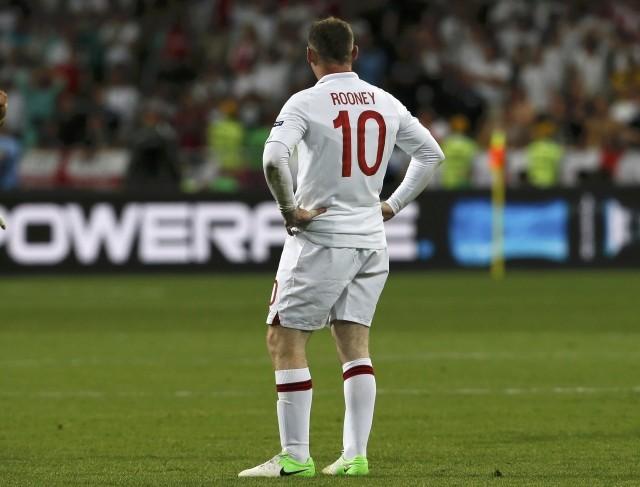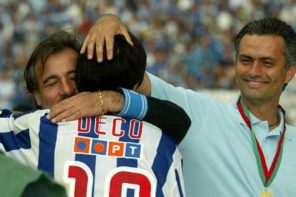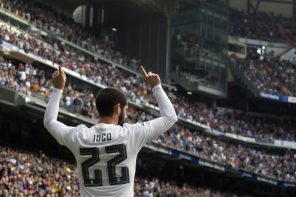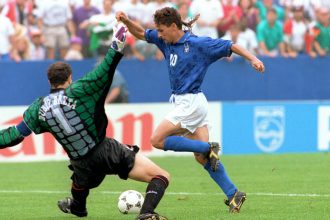Playmaker, English fantasista, or just a plain old striker?
He wears the number 10 shirt and is outrageously talented, but as an Englishman, already pre-defined as a striker and playing in the Premier League, the term ‘fantasista’ will be foreign to Wayne Rooney in more ways than one.
Just last season however, his manager at club level, Alex Ferguson, had deployed his ‘striker’ in a deeper role – in the heart of the Manchester United midfield – prompting a debate over what many people have suggested for a number of years: is this the United number 10’s best position?
But whilst the many pros and cons were being discussed in a somewhat typically rigid (dare I say, British?) sense over whether he should simply remain as a ‘striker’ or move to become a central midfielder, to others it signalled a different kind of question: is Wayne Rooney that most rarest of breeds – is he an English fantasista?
Football culture in Britain is obviously different to the many Latin countries around the world which have so often produced this kind of player – the number 10 playmaker. But that is not to say the British Isles have never produced these players. We only have to look back at names like Gascoigne, Dalglish, Beardsley, Hoddle and Le Tissier to see examples of players who had the attributes of a traditional fantasista, and if born in a Latin country, would probably have been used and classed as such.
However, due to the culture and footballing environment they were brought up and nurtured in, the total freedom to operate as such at both club, but more so international level, was restricted. All five still had outstanding club careers, but Dalglish aside, internationally one senses their immensely rare talents were not best utilised and/or trusted. More recently another English ‘number 10’ rare talent, Joe Cole, has fallen by the wayside, never fully trusted to operate in what seemed like a most obvious and natural role.
But should Rooney be recognised as a modern day fantasista, and therefore be allowed to operate as such? He certainly has similar attributes that embody a natural number 10.
As a striker Rooney has never really operated as such, often drifting deeper to involve himself in the build-up play. Such is his excellent technique and touch, he often becomes the fulcrum of the intricate attacking moves that Manchester United launch, which brings us to two other of his fantasista-like attributes: vision and passing.
At times Rooney tends to see openings that other don’t, and his long-range passing is exemplary for a mere ‘striker’, perhaps better than people give him credit for. Examples of his passing range and accuracy have often been best demonstrated amongst Europe’s elite in the Champions League; particularly last season whilst operating from a deeper position.
Perhaps due to his preference for seeking out the ball in all areas the pitch, for all his goalscoring exploits, Rooney is seen as more of a scorer of great goals, than a natural predator. In that sense he is not a natural striker – one who’s just happy to roam in and around the penalty box – and that is another fantasista-like trait.
However this is where his traits start to diverge from that of a traditional number 10, and even their modern-day equivalents. Rooney rarely dribbles and beats his opponents with trickery or foot-speed, rather, relying on coupling his technique with explosive power and pace.
Rooney is also ‘explosive’ in more ways than one, with a temperament that ranges from wholehearted, over-enthusiasm to steaming anger. And when this red-mist descends (which it often does), it leads to plain stupidity and at times, even thuggery.
Whilst there have been examples of angry number 10s in the past – most notably Zinedine Zidane and Diego Maradona – it was mostly born out of intense provocation and rough-house tactics from the opposition; not through a spoilt sense of injustice when things were not going their way. In this sense, and in ‘footballing brain’ terms, Rooney is more of a reactor than a typical fantasista, meaning that whilst his vision may be good, he reacts more to what is happening (or what has just happened around him), instead of constantly instigating and planning – which is essential for any playmaker.
Thoughtful? Yes, but ingenious? Not quite. And whilst his vision and aforementioned passing accuracy can lead to openings, his final ball is nowhere near consistent enough and therefore not one that lends itself to a supreme playmaker – a fantasista.
It is these differences in attitude, attributes and probably more so, his physical stature, which ultimately separates Rooney from the fantasista-class. As Italian football expert Giancarlo Rinaldi of footballitalia.net stated, when I asked for his opinion on the subject:
I struggle to see Rooney as a fantasista, at least in my definition of the word. It comes down to both the physical and mental qualities I perceive that kind of player to require. In my mind, they [the fantasisti] generally have a more fragile physique than their team-mates, but make up for it with their sharp footballing brains.
The fantasisti also carry themselves with a certain style around the pitch – they have a certain swagger. Certainly a contrast to the way Rooney stomps around a football field, seemingly at 100mph at times.
Italians gave birth to the term ‘fantasista’ and have given the world many of its greatest examples, ranging from Gianni Rivera to Roberto Baggio, Giancarlo Antognoni to Gianfranco Zola. However, a fantasista is not just a number 10 who possess certain attributes – they are also a feeling. And whilst, as Giancarlo Rinaldi agrees, Rooney “occupies the field position normally assigned to a fantasista, and can be creative”, he just doesn’t give that feeling.
Whilst it is our belief that Rooney should not be classed as a fantasista, he does wear the iconic shirt number and perhaps, should be played in what would surely be his best position; a role just a little deeper, deployed behind a striker or two, for both Manchester United and England – an English playmaker.







